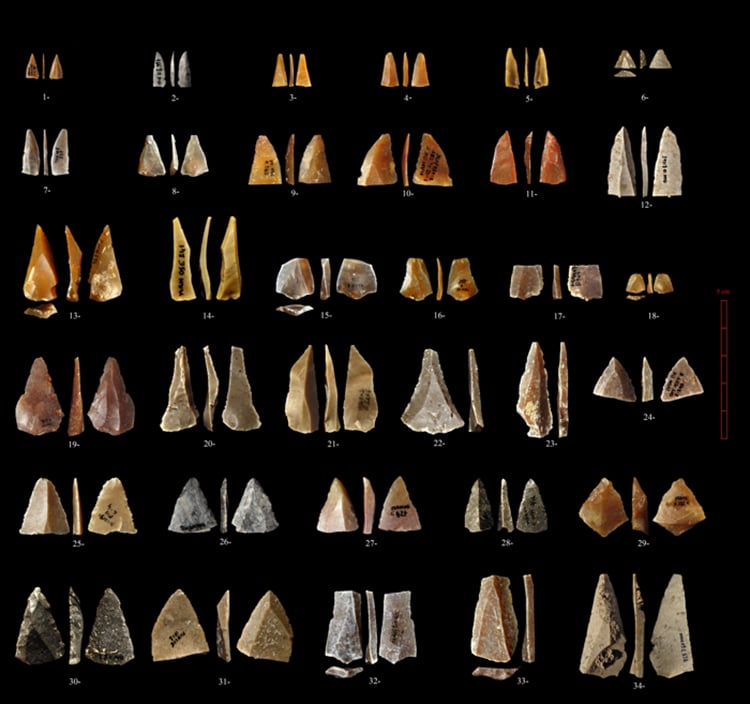The cave in Mandrin, France.
Before that, the continent was home toNeanderthals, another species of early human.
A recent discovery announced inSciencehas readjusted this timeline and the relationship between the two species.

The cave in Mandrin, France. (Photo:Ludovic Slimak)
The cave is a rich deposit of evidence on prehistoric humans.
These layers demonstrate that Neanderthals and Homo sapiens both lived in the cave in an alternating pattern.
In a layer labelled E, 1,500 cut flint points were discovered.

Neronian points, likely arrowheads. (Photo:Laure Metz and Ludovic Slimak)
Their fine workmanship was different than Neanderthal tools.
The flints were likely crafted as arrowheads, and they match the techniques seen in early modern human tools.
Among the flints, the researchers discovered a milk tooth.
Microtomography at the University of Bordeaux proved the tooth was from a modern human.
It is the earliest evidence of modern humans in western Europe.
This discovery pushes the arrival of the species back to 56,800 and 51,700 years ago.
This discovery is further proof that the human story is still being researched and written.
Neronian points, likely arrowheads.